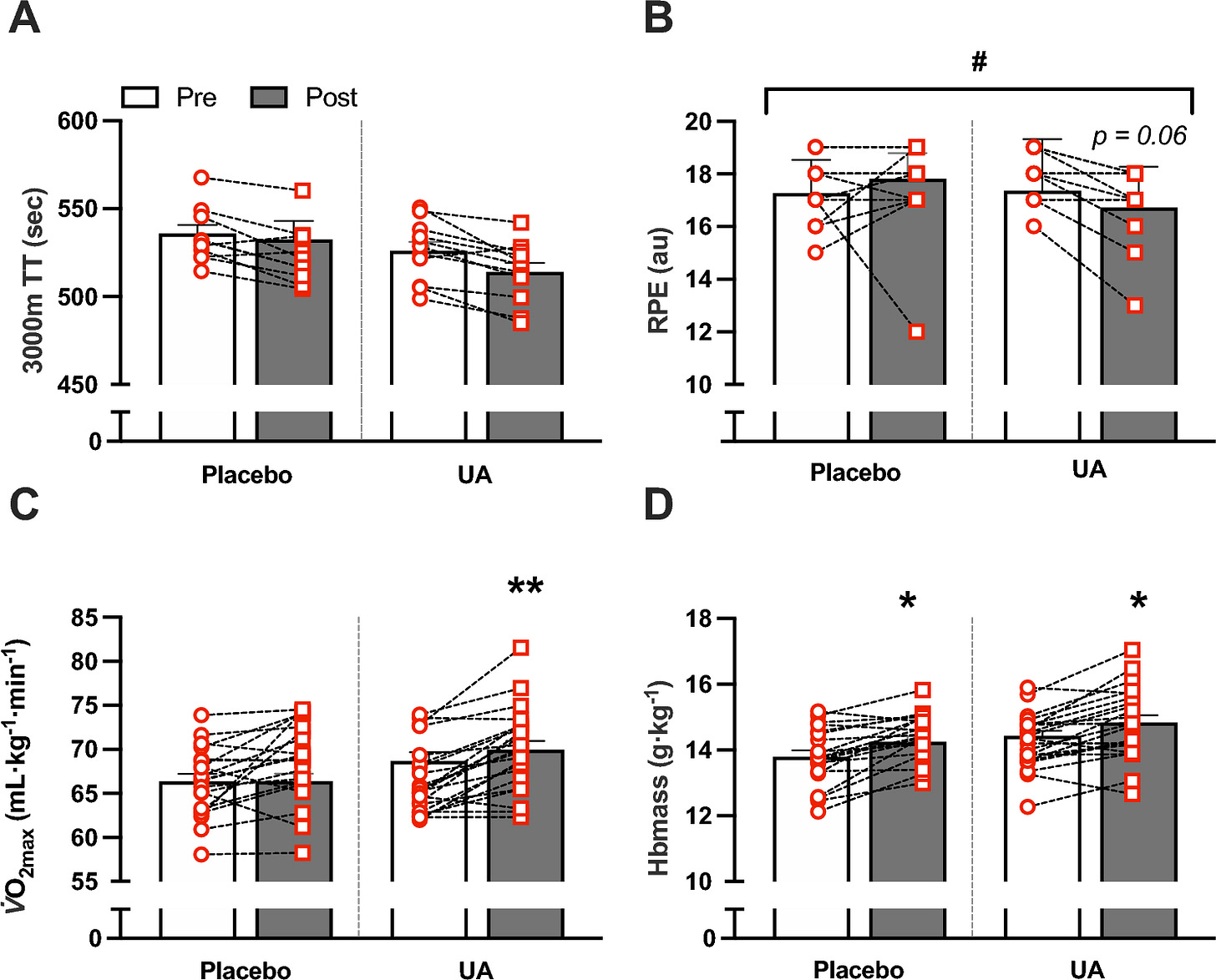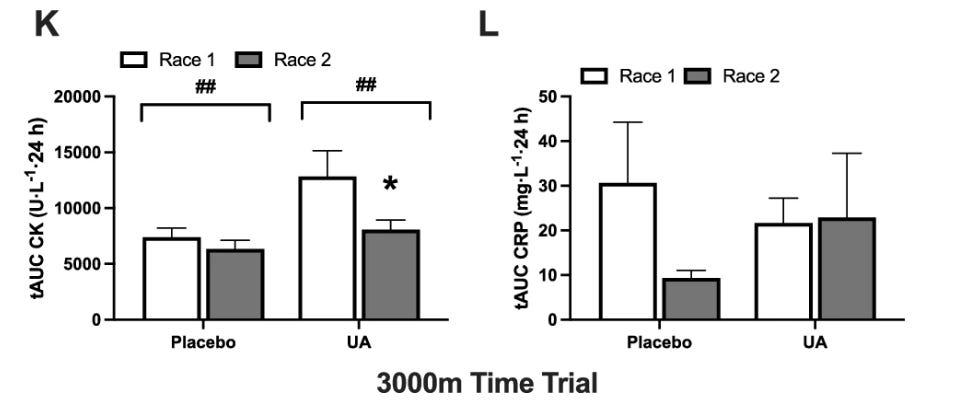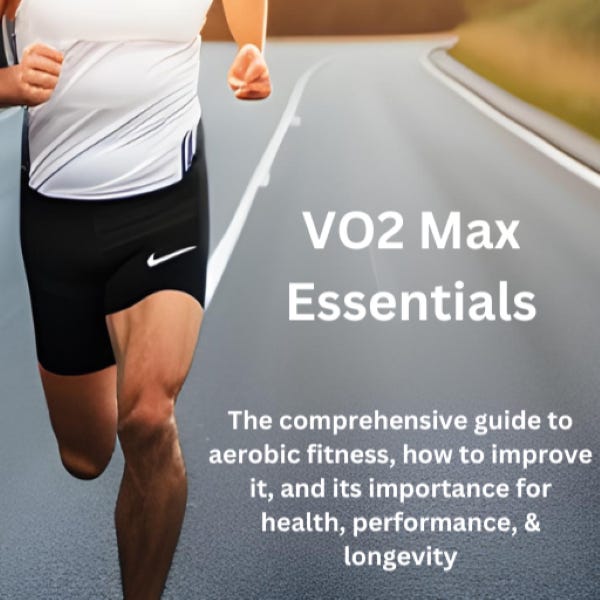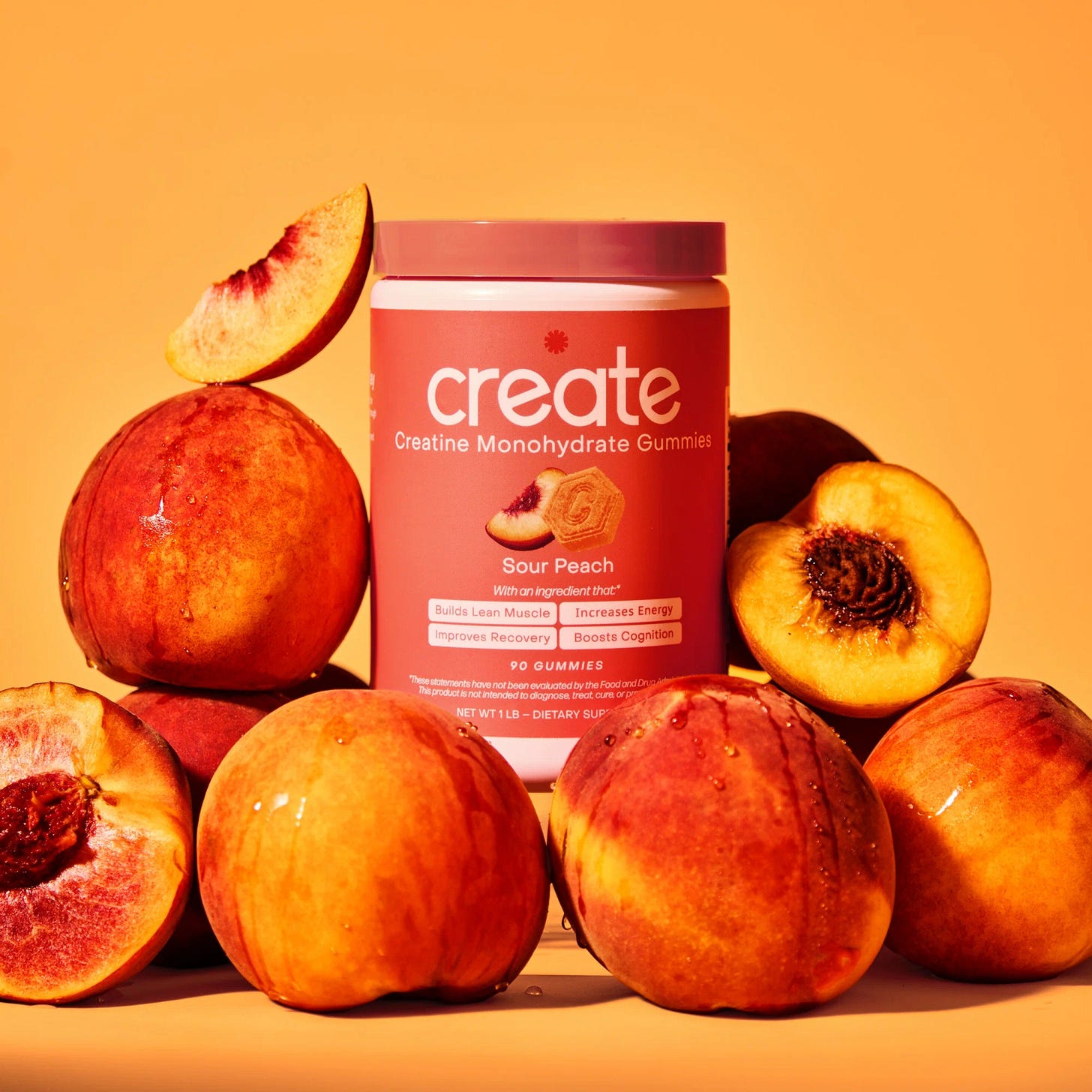Physiology Friday #293: Is Urolithin A the Next Big Performance Supplement?
Our gut makes it from pomegranates and walnuts. And it could help elevate your aerobic fitness when added to a training regimen.
Greetings!
Welcome to the Physiology Friday newsletter.
Details about the sponsors of this newsletter, including Ketone-IQ, Create creatine, and my book “VO2 Max Essentials,” can be found at the end of the post. You can find more products I’m affiliated with on my website.
A compound your gut makes from pomegranates and walnuts could tweak your mitochondria, aid your recovery, and help your performance and fitness. If you’re rolling your eyes…just bear with me.
That molecule—urolithin A—keeps popping up in places endurance athletes care about: muscle endurance, recovery, and the energy factories that power our body (mitochondria).
What’s urolithin A?
Urolithin A (UA) is a gut-derived “postbiotic” made when specific microbes convert ellagitannins/ellagic acid from foods like pomegranates, some berries, and walnuts. Not everyone can make much UA—people fall into metabotypes: A (good UA producers), B (mixed urolithins), or 0 (non-producers). Roughly 40% are strong UA producers, so purified UA supplements are used to bypass this variability. After absorption, UA circulates largely as conjugates (e.g., UA-glucuronide) and is generally well tolerated in human studies.
Mechanistically, UA is best known for activating mitophagy—the cellular “quality control” process that clears damaged mitochondria—often followed by mitochondrial biogenesis signaling (e.g., higher PGC-1α), leading to healthier, more efficient mitochondria over time.
In human trials (mostly in middle-aged or older adults so far), supplementation has been linked to better muscle endurance and strength on standardized tests, modest bumps in aerobic capacity, and shifts in blood markers that hint at more efficient fat metabolism and lower systemic inflammation. None of this screams “exercise in a pill,” but it does describe the kind of slow, structural improvements that matter over a long-term training block. Most of us will take all the help we can get!
So why might urolithin A help endurance athletes or those looking to improve their aerobic fitness, speculatively? Two reasons:
First, endurance performance depends as much on the quality of your mitochondria as the quantity. Better turnover could mean more efficient ATP production at a given pace (i.e., the same workload feels easier).
Second, recovery. If urolithin A dampens muscle-damage signals and inflammation after hard sessions, you might bounce back faster and stack more quality training (arguably the biggest real-world performance lever).
In today’s newsletter, I’ll dig into the newest randomized trial in highly trained runners at altitude—what changed, what didn’t, and how we should think about urolithin A (or perhaps the foods it’s derived from) as a tool in your training plan.1
Runners (average VO₂max ~66 mL/kg/min) were randomized to one of two groups: a urolithin A group (22 runners who took 1000 mg per day) or a placebo (20 runners) for 4 weeks spanning a supervised altitude training camp. Everyone had body composition, hemoglobin mass, running economy, 3000m time trial performance, and VO₂max assessed before and after. Each week at altitude, they also completed a ~4.5 km “hard” downhill run to provoke muscle damage and assess how markers of muscle damage and inflammation would respond.
A separate cohort (20 participants; 11 from the urolithin A group and 9 from the placebo) provided samples of their muscles.
Performance & physiology changes
The 3000m performance improved slightly in both groups: those taking urolithin A improved by ~2.3% (~12 seconds) versus ~0.6% (~3 seconds) in the placebo group. RPE (effort) after the post-camp race was lower with urolithin A, meaning the runners reported a lower effort despite running slightly faster.
VO₂max increased more with urolithin A—from 66.4 to 70.0 mL/kg/min (~5.4% increase) vs. 66.4 to 68.7 (~3.6% increase) in placebo, even though hemoglobin mass rose similarly in both groups (~4–5%). This is a hint that urolithin A may impact aerobic fitness in ways not related to more red blood cells. Meanwhile, running economy at a fixed speed didn’t change meaningfully, and body composition (lean mass and fat mass) stayed stable.

Recovery & muscle damage
Muscle damage markers (specifically, something called creatine kinase or CK) responses to the weekly downhill runs declined across weeks in both groups (a classic training adaptation), with no clear separation. After the 3000m race, runners taking urolithin A showed a clearly lower CK total response over the next 24 h, whereas those in the placebo didn’t—a signal of reduced exercise-induced muscle damage.
C-reactive protein (CRP; an inflammatory marker) didn’t move much in either group.
Muscle biology
In the biopsy group (those who didn’t complete the running tests but who gave samples of their muscles instead), urolithin A didn’t crank up mitochondrial output, but it shifted the muscle’s “internal toolkit” toward better mitochondrial upkeep.
First, proteomics (a big survey of thousands of muscle proteins) showed a coordinated rise in proteins that build and service mitochondria. Two big clusters moved:
Mitochondrial ribosomal proteins (which assemble mitochondrial proteins) and other translation/assembly factors were higher.
Proteins tied to mitochondrial gene expression nudged up, including an enzyme that transcribes mitochondrial DNA.
Second, there were signs that mitophagy (the recycling of worn-out mitochondria) was dialed up. Better turnover usually means healthier, more efficient mitochondria over time.
Third, pathways linked to inflammation trended down. That doesn’t mean “no inflammation,” but it suggests that urolithin A could be useful for calming it during heavy training blocks with the added stress of altitude, for example.
Despite all of these changes, classic mitochondrial capacity markers didn’t budge in 4 weeks. Those usually require either more time, more training stimulus, or both. In other words, urolithin A didn’t seem to enhance mitochondrial function or their number in this study.
If you’re heading into an intense block of training (altitude, race-specific preparation, heavy downhill or track work, or even strenuous resistance training), urolithin A (1000 mg/day was used in this study) may help you feel better and show lower muscle-damage markers after hard efforts, and it might even slightly enhance your VO₂max. These are all useful if it lets you stack quality sessions with less residual fatigue.
I wouldn’t expect urolithin A to magically drop your race times or other performance measures—training and fueling still do the heavy lifting. But as a recovery-support add-on, it’s a reasonable experiment for 4–8 weeks, ideally with a third-party-tested product and morning dosing on an empty stomach as in the study.
If you’re older or less highly trained than this cohort, the chance of a noticeable benefit may be higher; if you’re already near your ceiling, expect subtle gains measured more in day-to-day readiness than massive PRs in training or racing.
A few caveats. The study included only men, lasted just 4 weeks, and performance and biopsy cohorts were separate (common in elite-athlete studies to keep tests feasible). In addition, the real-world camp variability (a strength and a limitation) adds noise to the data.
Quick word of warning, this stuff is NOT cheap. The highest quality brand (Mitopure) comes in at $115 for a month’s supply. If you’re looking for a more budget-friendly option, find some pomegranate juice or pomegranate extract or munch on some walnuts, and let your gut microbes do the work of (hopefully) turning it into urolithin A.
Thanks for reading. See you next Friday.
~Brady~
The VO2 Max Essentials eBook is your comprehensive guide to aerobic fitness, how to improve it, and its importance for health, performance, and longevity. Get your copy today and use code SUBSTACK20 at checkout for a 20% discount. You can also grab the Kindle eBook, paperback, or hardcover version on Amazon.
Ketone-IQ is high-performance energy in a bottle. I use it for post-exercise recovery along with enhancing focus, mood, and cognition. Take 30% off your order.
Create is the first “modern creatine” brand. They sell a wide range of creatine monohydrate gummies—and yeah, their gummies actually contain creatine, unlike some other brands. They’re giving my audience 30% off their order this week. So stock up!









Hi Brady, enjoyed this piece! How would this supplement stack up against the likes of others such as tart cherry juice and Blackcurrent NZ extract (i.e. CurraNZ)? Could be wrong but I think tart cherry juice is used during demanding training blocks, and a similar proposed benefit for the CurraNZ.